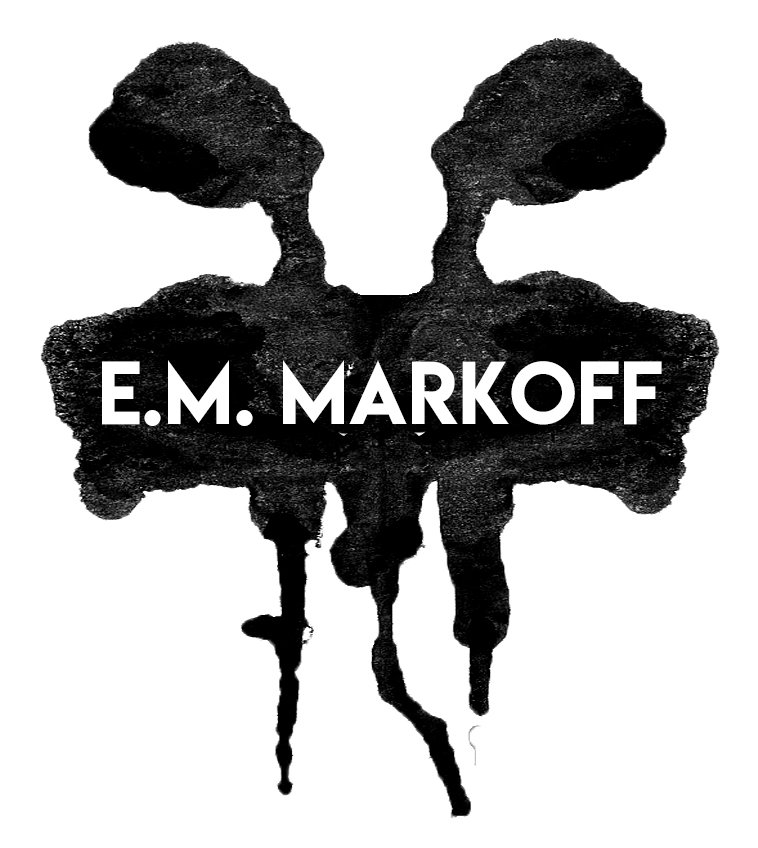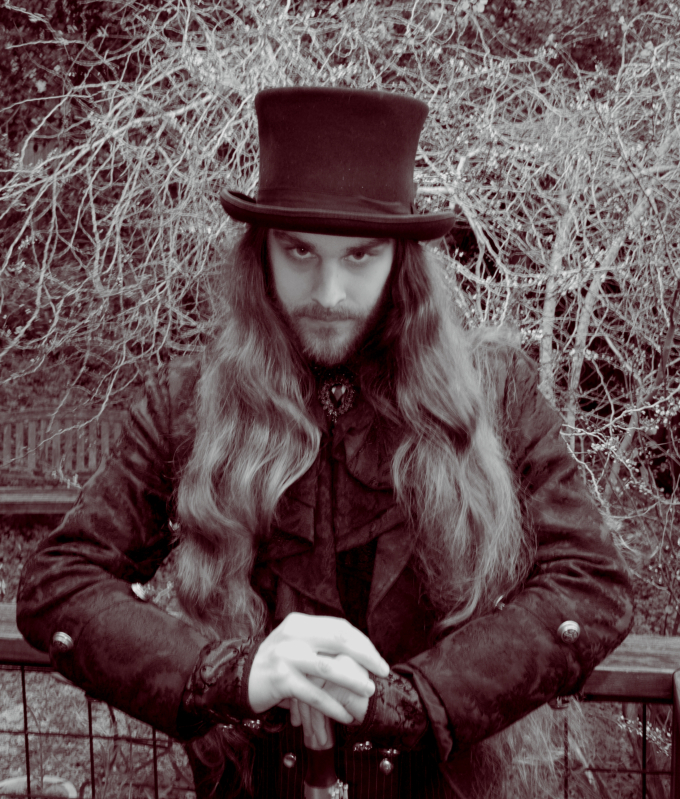Halloween in Christmas: Podcasting and Quilting Pumpkins with HorrorAddicts.net
Lo! Christmas is nigh. And thus I bring a bit of October back with a podcast glorifying all things dark, including a quilted pumpkin project. To everyone driving for the holiday season, stay safe! Back in October, I was invited by HorrorAddicts.net to be a guest on their podcast’s season finale.
Lo! Christmas is nigh. And thus I bring a bit of October back with a podcast glorifying all things dark, including a quilted pumpkin project. To everyone driving for the holiday season, stay safe!
Back in October, I was invited by HorrorAddicts.net to be a guest on their podcast’s season finale. I was super excited to be a part of the project and thankful that I could help out. This marked the fourth time I’ve appeared on a podcast or broadcast, but the first time I’ve been able to see the podcaster at work. Previously, I was a guest on Unreliable Narrators via Skype, did a live reading of “Leaving the #9” at SF in SF, appeared on FCC Free Radio (FFR) alongside Tales for the Camp Fire: A Charity Anthology editor Loren Rhoads.
But of course, anxiety decided to rear its ugly head.
Participating in the HorrorAddicts.net podcast episode as it was being recorded was a very insightful experience. I got to see the podcaster (Emerian Rich) at work directing, narrating, planning, troubleshooting, stabbing repeatedly at a craft pumpkin, sound checking, checking on her crew between takes, etc. The number of moving pieces was way more than I had ever expected, and I only saw one part of a very large beast … mind blown. Mad respect to all the podcasters out there!
The number one thing that stood out to me about podcasting is how forgiving it seemed to be. Stumble on a word? Say something you wish had not left your pie hole? No problem: re-record and edit. There had been no such accommodation on the live radio show, which was also a great experience, but different (I now have the cutest lucha libre rubber duck courtesy of FFR’s host)!
The other difference with podcasting was being able to see the questions ahead of time, although even then my mind blanked. While talking about favorite cursed places with Emerian and crew, I forgot to mention one of my favorite YouTubers who explores abandoned places: Exploring with Josh. It’s like knowing what books you want and forgetting them all the moment you step into the bookstore!
During the podcast, we talked horror movies, gothic music, and upcoming dark literature releases, and that was just in the segment I was part of! Afterward, we somehow wandered into the topic of hats, and I learned something new about my friend: she makes tea hats. The Craft(ing) is strong with Emerian. Not so much with me. Need a button or patch sown? I gotcha. Need that hemline raised? That’s what safety pins and staples are for 🙃.
To date, my quilted pumpkin remains unfinished, its iridescent green bottom naked for all to see. Mind you, it’s not for lack of supplies, as my friend was kind enough to send me away with the necessary accoutrements. One day, Little Pumpkin, I will finishing driving pins into your artificial flesh. One day.
Safe travels and best wishes to everyone, during this holiday season and always.
Until next we meet,
EMM
Check out podcast Episode 176 and how to make your own quilted pumpkin.
Guest Post: How Metal Changed My Life by Jonathan Fortin
My short story Requiem in Frost is not exactly autobiographical. I’m not a Norwegian girl, and I’ve never lived in a house haunted by the ghost of an extreme metal musician. But there is an important facet that is taken fairly directly from my own life …
My short story Requiem in Frost is not exactly autobiographical. I’m not a Norwegian girl, and I’ve never lived in a house haunted by the ghost of an extreme metal musician. But there is an important facet that is taken fairly directly from my own life.
Requiem is the story of Ingrid, a fourteen-year-old girl who discovers music that speaks to her after finding it abrasive throughout her childhood. This was more or less my own experience growing up as a hypersensitive autistic boy. Bright sunlight hurt my eyes; my first time showering felt like needles were puncturing my back; I was disgusted by food that everyone else loved; and music made my ears hurt. That last one made me feel especially alone in the world; who didn’t like music? It didn’t help that my dad was a jazz guitar player, and my brother a drummer, whose drum set took up a big chunk of the room we shared. At school, the other kids blared hip-hop, the bass turned up so high that I felt its vibrations in my chest and temples—an uncomfortable, violating sensation that would render me unable to think or function.
As a result of all this, I considered music to be abrasive, inescapable noise that was forced upon me. I enjoyed certain movie soundtracks and didn’t mind the angsty punk rock that my brother introduced me to, but nothing really awakened my passion until I turned seventeen, and I decided to seek out music of my own. I was obsessed with Tim Burton movies, and had got it into my head that I was a goth, even though I had yet to dress the part or listen to the music associated with the subculture. My school didn’t have too many goths, so I took to the internet, asking online acquaintances for suggestions—some of which I liked, some of which I didn’t. Slowly, I expanded my musical knowledge, and was soon hooked on goth, industrial, and of course metal.
My exposure to extreme metal began, as it did for many in my generation, with Cradle of Filth. At seventeen, I was not yet accustomed to screamed or growled vocals, finding them as abrasive as high-bass hip-hop. The beautifully gothic music video for Cradle of Filth’s “Nymphetamine” changed that. It mixed Dani Filth’s (rather silly) growls with clean, angelic vocals from Liv Kristine and a sumptuous visual style. I was so taken by the aesthetic of the clip that I watched it over and over, slowly becoming desensitized to the growled vocals. From there I moved on to Dimmu Borgir’s symphonic epic “Progenies of the Great Apocalypse,” and shortly thereafter moved onto more traditional (or “proper”) black metal acts—eventually falling in love with the likes of Emperor and Immortal. Amongst seasoned black metal fans, Cradle of Filth and Dimmu Borgir are largely a joke. Both bands are cheesy and commercialized when compared to true black metal. But I think it’s important to realize that these bands can serve as a gateway to what many of us think of as better music.
Black metal doesn’t have the best reputation. Most “normal” people find it too abrasive to listen to; its history is full of suicide, church-burning, and murder; and there’s an unfortunate Neo Nazi contingent in the fandom. But for me, the dark music became a source of comfort and catharsis, its abrasions somehow healing, its barbarism somehow peaceful. It also became a source of community, allowing me to meet other people with similar interests and beliefs. I cannot understate what a hugely significant thing this was. Growing up, I didn’t have too many friends—I was awkward, shy, and didn’t have too much in common with my peers. Discovering my music allowed me to discover my people.
In other words, this dark, satanic music was a wholeheartedly positive influence on my life, and a big reason why I managed to grow up into a well-adjusted, high-functioning adult.
You’ll have to read Requiem in Frost to find out whether the same can be said for Ingrid.








